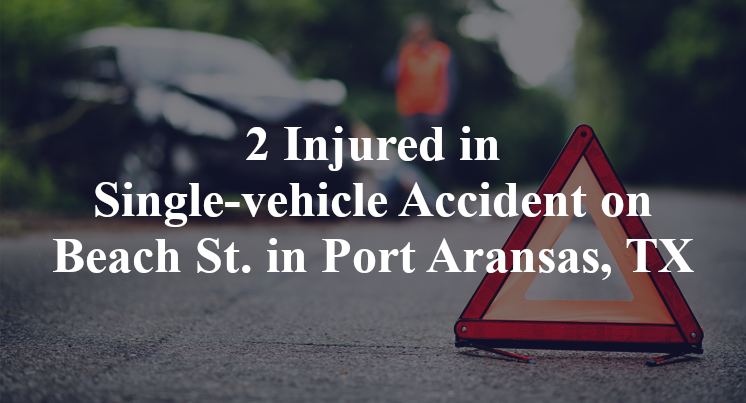2 Injured in Single-vehicle Accident on Beach St. in Port Aransas, TX
Nueces County, TX — April 26, 2025, two people were injured following a single-vehicle accident at approximately 6:30 p.m. along Beach Street.
According to authorities, three people—two men ages 62 and 51 and a 54-year-old woman—were traveling in a westbound vehicle on Beach Street in the vicinity southeast of the Station Street intersection when the accident took place.

Officials indicate that—for reasons yet to be confirmed—the vehicle was involved in a single-vehicle accident in which the 51-year-old passenger was seriously injured. The woman may have been hurt, as well, according to reports. Additional details pertaining to this incident—including the identities of the victims—are not available at this point in time. The investigation is currently ongoing.
Commentary
When crashes like this happen—where a single vehicle leaves the roadway and results in serious injuries to one or more passengers—it’s often assumed that the driver simply made a mistake. But in my experience, especially in cases involving multiple occupants and limited detail, it’s critical to dig deeper. To understand what really happened along Beach Street in Nueces County, there are three essential questions that must be answered.
First, did investigators conduct a thorough examination of the scene and roadway conditions? Beach Street’s location near the coast could mean curves, visibility challenges, or narrow lanes—any of which could contribute to a vehicle leaving the roadway. Was the road properly marked and maintained? Were weather conditions a factor, or was there something in the roadway that required a sudden maneuver? A complete investigation should document tire marks, the vehicle’s point of rest, and any available surveillance or dashcam footage to reconstruct what led up to the crash.
Second, has anyone considered whether a mechanical failure played a role? Failures in steering, brakes, or suspension systems can cause a driver to lose control, especially at lower speeds where such failures might otherwise be dismissed. A sudden tire blowout or loss of power steering could cause a vehicle to drift or swerve uncontrollably, and those kinds of failures won’t be identified without a detailed forensic inspection of the vehicle in its post-crash condition.
Finally, has all available electronic and digital evidence been collected and reviewed? Many modern vehicles include event data recorders that log speed, brake input, and steering behavior in the moments before a crash. That data can help determine whether the driver attempted to correct course, whether the vehicle responded properly, and whether there were signs of a loss of control. Investigators should also pursue any GPS data, cell phone activity, and surveillance footage from nearby buildings or homes that might show what happened.
Answering these three questions is critical to making sure that no stone is left unturned in understanding the causes of a crash like this. Serious wrecks deserve serious investigation, not assumptions. Getting clear answers to these questions is crucial for those seeking to understand what happened and why—and it's the least that can be done to help those affected find the clarity and closure they deserve.

*We appreciate your feedback and welcome anyone to comment on our blog entries, however all visitor blog comments must be approved by the site moderator prior to showing live on the site. By submitting a blog comment you acknowledge that your post may appear live on the site for any visitors to see, pending moderator approval. The operators of this site are not responsible for the accuracy or content of the comments made by site visitors. By submitting a comment, blog post, or email to this site you acknowledge that you may receive a response with regard to your questions or concerns. If you contact Grossman Law Offices using this online form, your message will not create an attorney-client relationship and will not necessarily be treated as privileged or confidential! You should not send sensitive or confidential information via the Internet. Since the Internet is not necessarily a secure environment, it is not possible to ensure that your message sent via the Internet might be kept secure and confidential. When you fill out a contact or comment form, send us an email directly, initiate a chat session or call us, you acknowledge we may use your contact information to communicate with you in the future for marketing purposes, but such marketing will always be done in an ethical way.